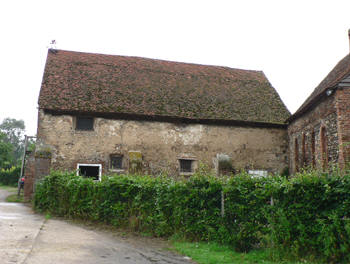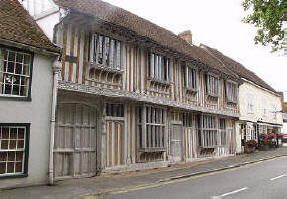 |
|
Welcome |
|
|
|
|
|
History |
|
|
|
|
|
|
|
|
|
Coggeshall today |
|
|
|
Guided Walk |
|
Visitor Information |
|
Sight-seeing |
|
Museum |
|
Footpaths |
|
What's on & latest news |
|
Our Visitors |
|
Links |
| . | ||||||
|
There has been a
settlement in the vicinity since pre-historic times with beautifully
polished stone axe heads and flint arrows being found in fields surrounding
Coggeshall. Evidence of bronze workings and some remnants of bronze tools
have also been discovered. The site of a Roman encampment and habitation was discovered
in the 1800s, not surprising as Coggeshall lies on Stane Street, the Roman road
between Colchester and St Albans. There is mention of the village in
the Domesday Book and it appears that it was a Christian community as a priest is listed. The foundation
of a large Cistercian abbey by Matilda, queen to King Stephen, began in 1140
and over the centuries until its Dissolution in 1538, the prosperity of the
abbey grew. The monks were, among other things, sheep farmers and this promoted the wool
and cloth trade. From the 15 |
||||||
|
||||||
|
||||||
|
|
||||||
|
||||||
|
||||||
|
There has been a brick bridge spanning the River Blackwater sine the time of the Cistercian monks at Coggeshall Abbey and the present bridge still contains some of the original 12th century bricks in the piers on the south side. It has, of course, undergone many alterations - one major one occurred in 1912 when the railings were removed (very useful for dating old pictures of the bridge!) In 1930 it was widened to the size it is today. |
||||||
|
||||||
|
About a mile outside of
Coggeshall is
Marks Hall Gardens and Arboretum
which was the home for more than 300 years
to the Honywood family who were responsible for the planting of the famous
Honywood oaks, one of which still remains today. Mary Honywood is
commemorated in the church in Coggeshall as having no less than 365
descendants at the time of her death! |





